France, Southern School
Beautiful stone statue representing Saint John the Baptist, crafted in the late 15th century in a rural or southern workshop. This piece stands out for its unique iconographic detail: a sculpted pig’s head at the saint’s feet, interpreted as a “chute de veste” (a whimsical detail), a motif occasionally found in similar representations, though rarely directed toward the saint.
Saint John the Baptist is depicted in his traditional posture, holding the Lamb of God, a symbol of his prophetic role. This model combines the simplicity of folk art with a strong spiritual presence, typical of the productions of local workshops.
1. Saint John the Baptist in His Traditional Posture
Saint John the Baptist is often represented in Christian art following well-established iconographic codes:
• The Lamb of God (“Agnus Dei”): John holds a lamb, a symbol of Jesus Christ, referencing John’s declaration in the Gospel of John (1:29): “Behold the Lamb of God, who takes away the sin of the world.” The lamb is a metaphor for Jesus’ redemptive sacrifice, central to the Christian faith. By holding the lamb, John points to Jesus as the Messiah, emphasizing his prophetic role.
• The Traditional Posture: John the Baptist is frequently depicted standing, dressed in a simple tunic, often made of camel hair, to recall his austere life in the desert, as described in the Gospels. This posture underscores his detachment from earthly goods and exemplary asceticism.
Artistic Reinterpretation by a 15th-Century Sculptor
A 15th-century sculptor, working in a rural workshop and likely never having seen a camel, may have reinterpreted and stylized this element based on local knowledge and representations of the time. In this context, the camel hair tunic might be depicted in a stylized manner or even replaced with textures or materials familiar to the artist, such as the skin of a local animal.
This adaptation highlights how folk artists combined their understanding of religious codes with their own environment and imagination while remaining faithful to the spiritual message of the work.
Iconographic Analysis
• Pig’s Head (chute de veste): This rare detail enriches the symbolism of the sculpture. In a Christian context, it could represent earthly impurity or sin, contrasting with the spiritual purity of Saint John the Baptist.
In Christian iconography:
• Old Testament: According to Leviticus 11:7 and Deuteronomy 14:8, the pig is classified as an unclean animal because it does not chew the cud. This view influenced Christian tradition, where the pig symbolizes the earthly and the carnal.
• New Testament: In the story of the healing of the possessed man (Mark 5:11-13), Jesus transfers demons into a herd of pigs, which then drown. This act connects pigs to demonic forces and sins.
• Folk Style: The simplicity of the features, attention to iconography, and slightly naïve proportions reflect the aesthetic of local or regional workshops, particularly in southern regions during the 15th century.
Condition and Restoration
• Ancient Restoration: The statue was broken into two parts and reinforced with metal ferrules and old mortar. This intervention is visible but stable, ensuring the solidity of the piece.
• Wear: Chips and signs of weathering on the stone and the lamb attest to its centuries-old history.
• Polychromy: Remnants of ancient paint suggest its original vibrant appearance, enhancing its sacred character.
Iconographic References (Sculpture Canons)
LIÉVEAUX-BOCCADOR Jacqueline, BRESSET Édouard
Statuaire médiévale de collection. 2 Volumes. (Pages 178-179 and 283)
• Animal Head Motif, Tunic:
• Saint John the Baptist – Statue (Deposit Number: D 1955.1.05, Musée Breton, Quimper)
• Saint John the Baptist, Neumeister Collection, Munich
Dimensions
• Height: 83 cm
• Weight: 60 kg
Shipping
By quotation or to be collected.


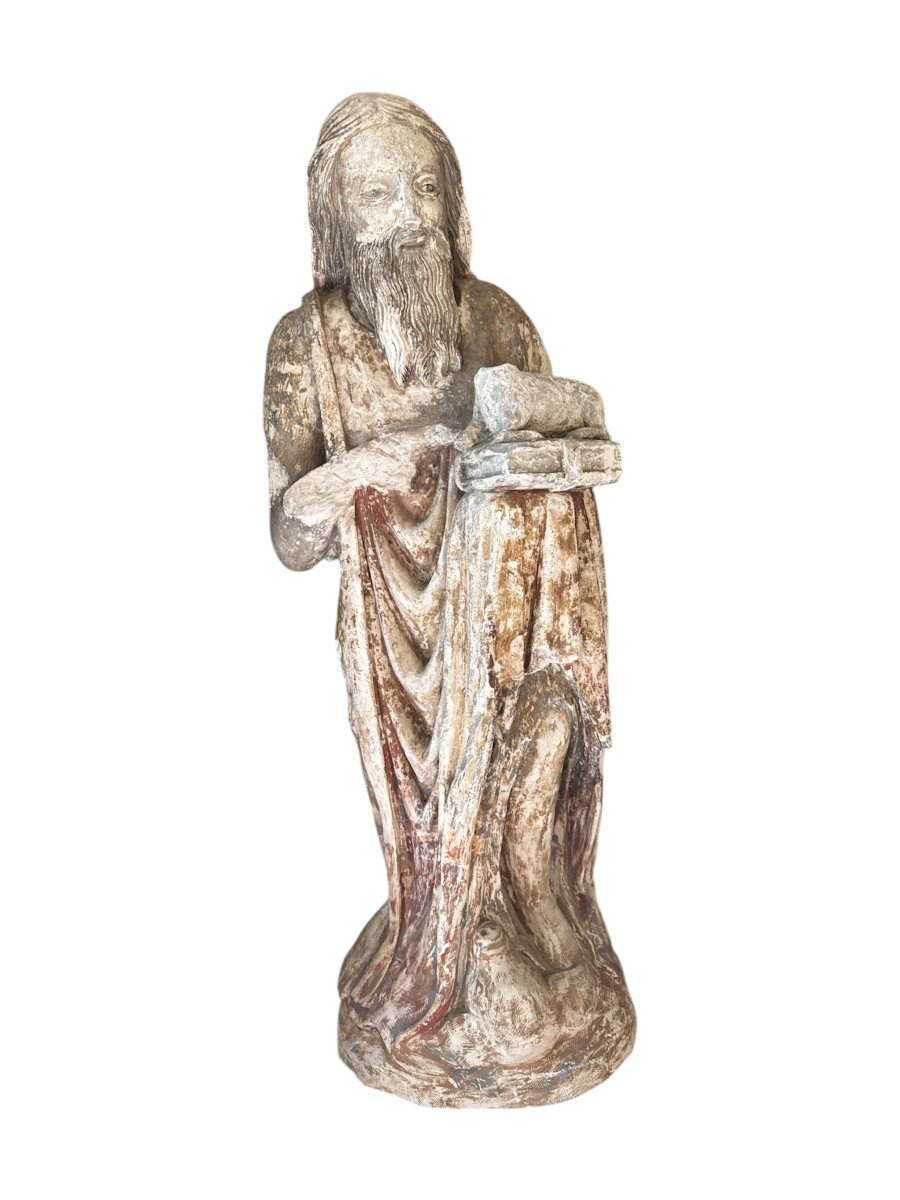
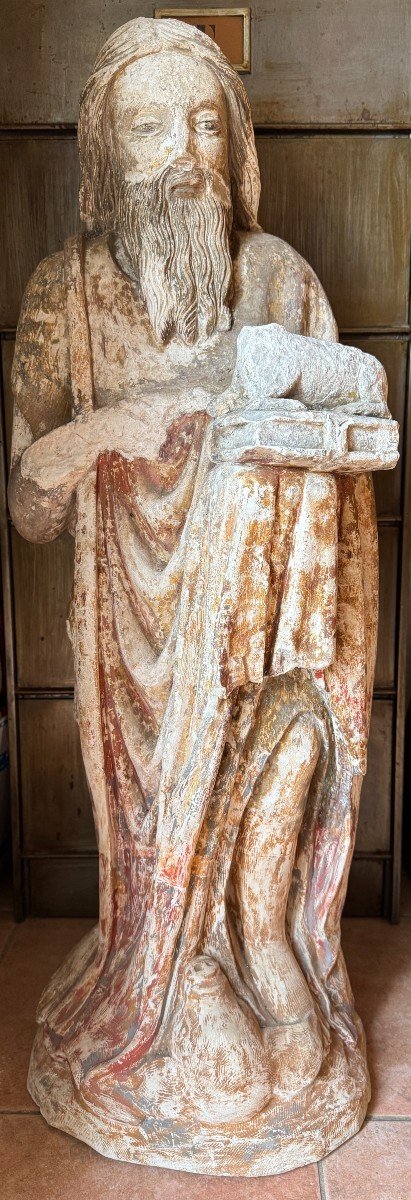


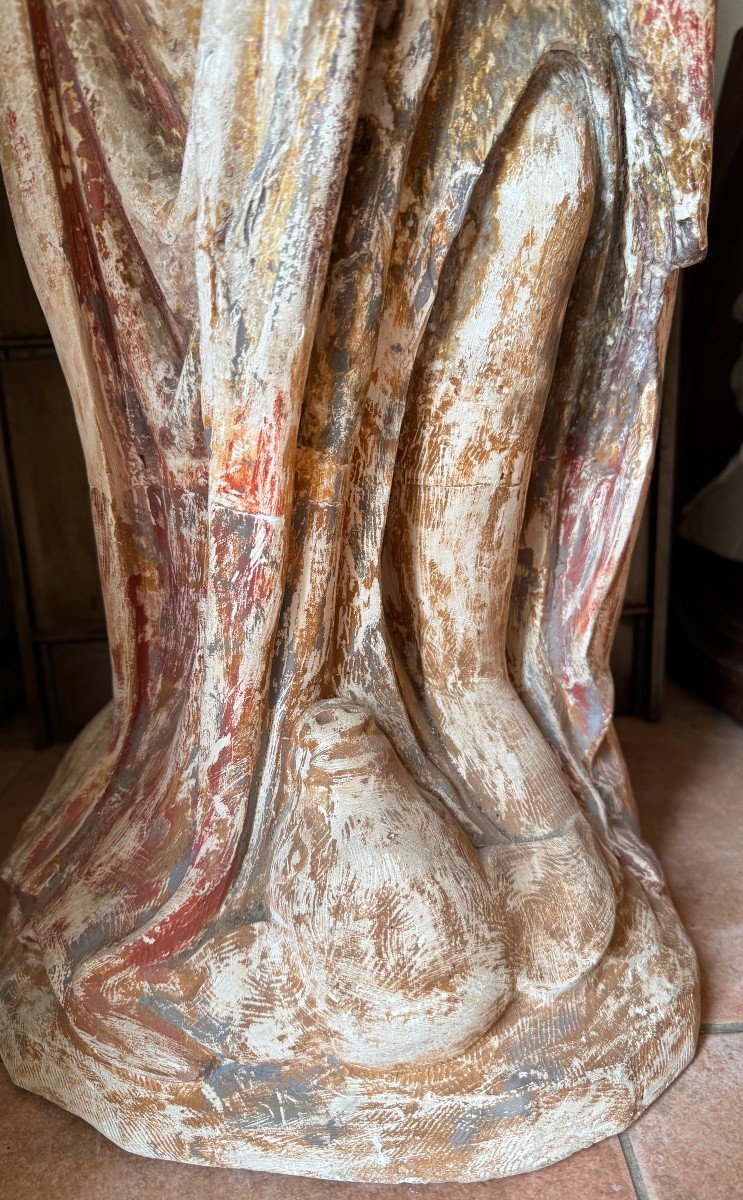




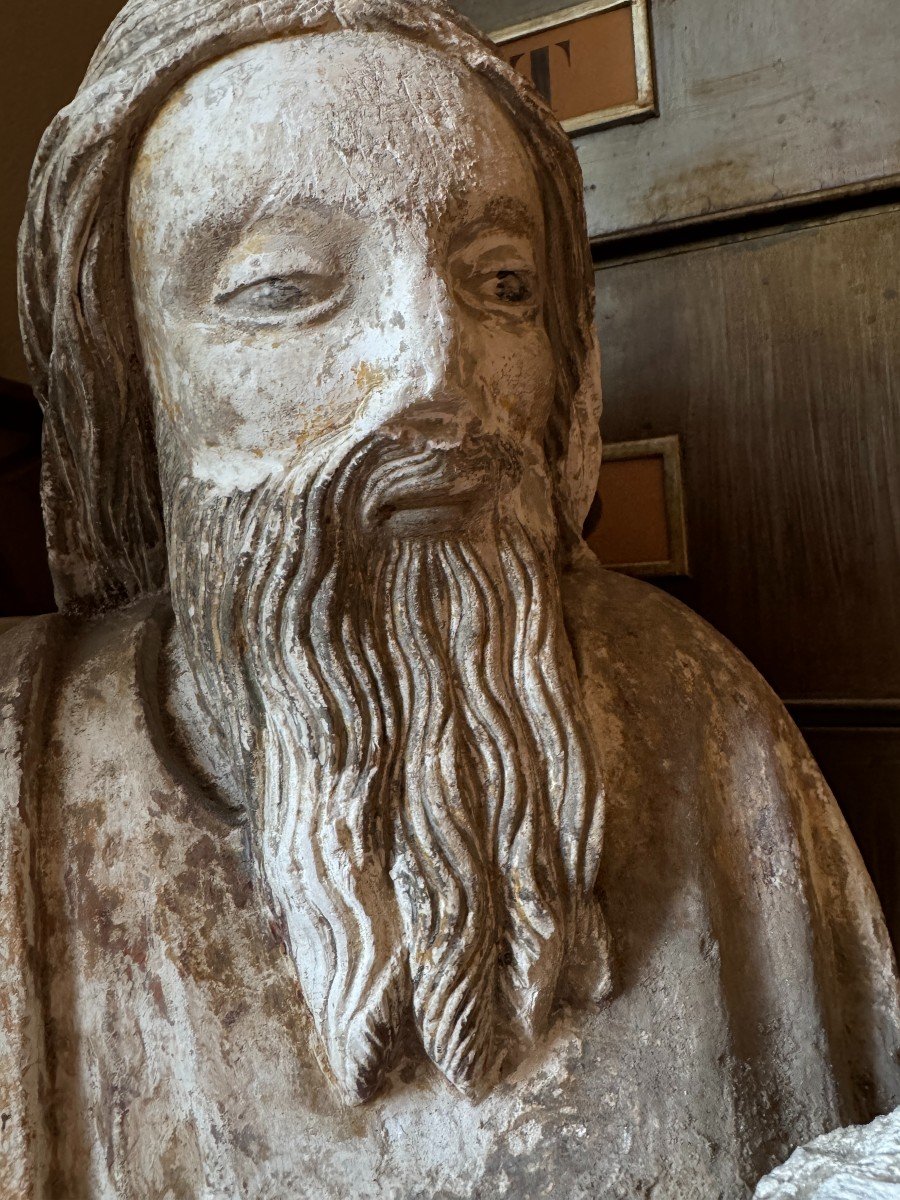

















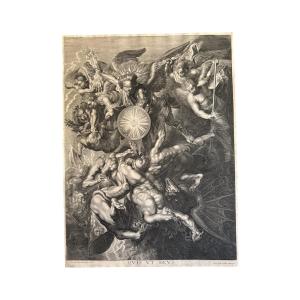




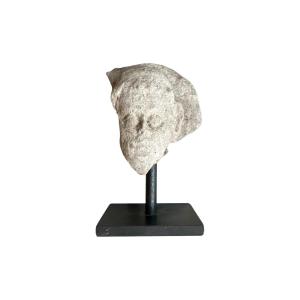




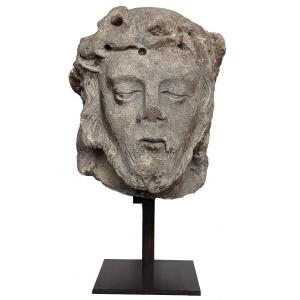
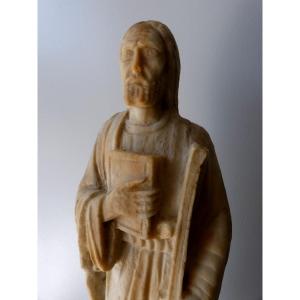




 Le Magazine de PROANTIC
Le Magazine de PROANTIC TRÉSORS Magazine
TRÉSORS Magazine Rivista Artiquariato
Rivista Artiquariato